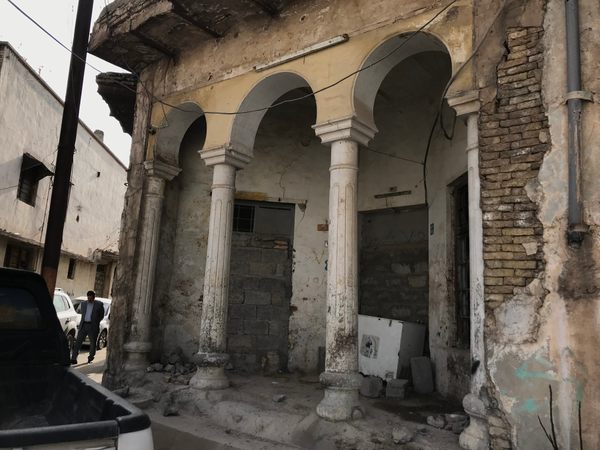Walking through Erbil’s Arab quarter, it’s not immediately obvious what has left the buildings mostly abandoned. Erbil is not a war-torn city. Unlike Mosul just 50 miles away, it was never bombed by the United States during the 2000s invasion, and not taken over by ISIS in the 2010s. As part of Iraqi Kurdistan, a U.S. ally, means that Erbil has largely avoided the destruction suffered in other parts of Iraq. Rather than conflict, this slice of the city is a victim of modernity.
Erbil is known for being one of the oldest continuously inhabited cities on Earth, with a history that dates back to before 4000 B.C. But the vast majority of the city is new. The ancient part is the famous Erbil Citadel at its center. The city didn’t begin expanding beyond the citdael until the Arab quarter was built in the early 1800s. While today the city is home to about a million people, its population was only 25,000 in 1947. Rapid expansion didn’t occur until the later 20th century. In 2017, the majority of the city had been built less than 30 years ago—approximately one-sixth of the city was older and even within that portion, most of the buildings were less than 60 years old.
Most of the city’s resources have gone towards building new rather than preserving old. The money that has been devoted to preservation has largely gone to the city’s oldest neighborhood, the Erbil Citadel, overshadowing the Arab quarter as the second-oldest neighborhood. With nobody to maintain or repair it, the 200-year-old Arab quarter has become a threatened heritage; many buildings are in danger of collapsing—if they haven’t already fallen. The neglect imperils homes as well as historical sites like the Swary Qishla, a 19th-century Ottoman fortress.
Those who could afford it have moved out to modern housing, and many who couldn’t afford it have been squeezed out by rising rent charged by wealthier former residents. In 2012, the government removed some of the district’s remaining inhabitants on the premise that the area would be restored and preserved, but this has yet to happen. In fact, parts of it have been replaced with parking lots. The area’s population decreased by about 92 percent between 1984 and 2015, and today only a relatively small number of people remain, many of whom are very old and have lived there for their entire lives.
The Arab quarter is thus a strange in-between, not quite an archeological site and not quite a living community. Scattered between collapsed buildings and empty houses lie some people who still call this quarter home, despite all.

